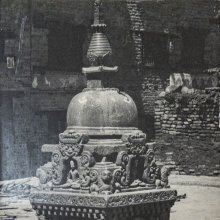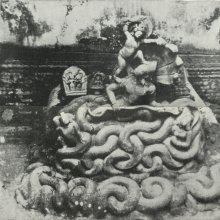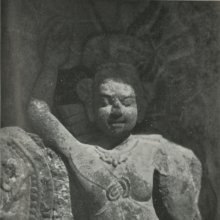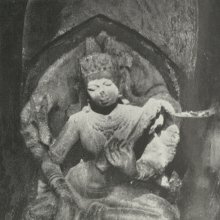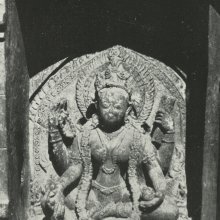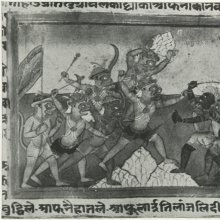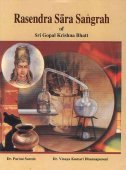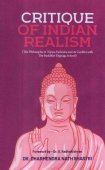Kathmandu: 6 definitions
Introduction:
Kathmandu means something in Buddhism, Pali, Hinduism, Sanskrit, Jainism, Prakrit, the history of ancient India. If you want to know the exact meaning, history, etymology or English translation of this term then check out the descriptions on this page. Add your comment or reference to a book if you want to contribute to this summary article.
Images (photo gallery)
(+234 more images available)
In Hinduism
General definition (in Hinduism)
Source: WikiPedia: HinduismHinduism in Kathmandu: Assumedly, together with the kingdom of Licchhavi (c. 400 to 750), Hinduism and the endogam social stratification of the Caste was established in Kathmandu Valley. The Pashupatinath Temple, Changu Narayan temple (the oldest), and the Kasthamandap are of particular importance to Hindus. Other notable Hindu temples in Kathmandu and the surrounding valley include Bajrayogini Temple, Dakshinkali Temple, Guhyeshwari Temple, and the Sobha Bhagwati shrine.
In Buddhism
Tibetan Buddhism (Vajrayana or tantric Buddhism)
Source: MDPI Books: The Ocean of HeroesKathmandu (in Nepal) is denoted in the Tibetan language as yam bu.—The Ḍākārṇava and Padmavajra’s Bohitā were translated into Tibetan by Jayasena and Dharma yon tan (also scribed as Chos kyi yon tan) in Kathmandu (yam bu) in Nepal (bal yul), which is described as “great [and best] place of accomplishment (or of the accomplished ones)” (grub pa’i gnas [mchog] chen po), according to the colophons of Tibetan translations of these texts Kathmandu was already an important site of Buddhist Tantrism.

Tibetan Buddhism includes schools such as Nyingma, Kadampa, Kagyu and Gelug. Their primary canon of literature is divided in two broad categories: The Kangyur, which consists of Buddha’s words, and the Tengyur, which includes commentaries from various sources. Esotericism and tantra techniques (vajrayāna) are collected indepently.
General definition (in Buddhism)
Source: WikiPedia: BuddhismBuddhism in Kathmandu: Buddhism started in Kathmandu with the arrival of Buddhist monks during the time of Buddha (c. 563 - 483 BC). They started a forest monastery in Sankhu. During the Hindu Lichchavi era (c. 400 to 750), various monasteries and orders were created which successively led to the formation of Newar Buddhism, which is still practiced in the primary liturgical language of Hinduism, Sanskrit. Legendary Princess Bhrikuti (7th-century) and artist Araniko (1245 - 1306 AD) from that tradition of Kathmandu valley played a significant role in spreading Buddhism in Tibet and China.
In Jainism
General definition (in Jainism)
Source: WikiPedia: JainismJainism is practiced by a small community. A Jain temple is present in Gyaneshwar, where Jains practice their faith. According to the records of the Spiritual Assembly of the Baha'is of Nepal, there are approximately 300 Baha'is in Kathmandu valley.

Jainism is an Indian religion of Dharma whose doctrine revolves around harmlessness (ahimsa) towards every living being. The two major branches (Digambara and Svetambara) of Jainism stimulate self-control (or, shramana, ‘self-reliance’) and spiritual development through a path of peace for the soul to progess to the ultimate goal.
India history and geography
Source: archive.org: Songs of NepalKathmandu (Kāntipura) refers to one of the three ancient kingdoms of Nepal.—It is noticeable that among the three principal cities in the Valley, Bhaktagrāma (Bhatgaon), also called Bhaktapura or Dharmapaṭṭana, distinguished itself as a center of predominantly Hindu pursuits, while Lalitapaṭṭana (Patan) favored Buddhist texts, and scholars residing at Kāntipura (Kathmandu) devoted themselves to the interpretation of Buddhist as well as of Hindu works.
Source: Wikipedia: India HistoryKathmandu (कथ्मन्दु) is the capital and largest municipality of Nepal. Historically, the Kathmandu Valley and adjoining areas were known as Nepal Mandala. Until the 15th century, Bhaktapur was its capital when two other capitals, Kathmandu and Lalitpur, were established. The city of Kathmandu was named after Kasthamandap temple, that stands in Durbar Square. In Sanskrit, Kastha (काष्ठ) means “wood” and Mandap (/मण्डप) means “covered shelter”. According to Swayambhu Purana, the present day Kathmandu was once a lake called Nagdaha. The lake was drained by Manjusri, who established a city called Manjupattan and made Dharmakar the ruler of the land.
Kirant Mundhum is one of the indigenous animistic practices of Nepal. It is practiced by Kirat people. Some animistic aspects of Kirant beliefs, such as ancestor worship (worship of Ajima) are also found in Newars of Kirant origin. Ancient religious sites believed to be worshipped by ancient Kirats, such as Pashupatinath.
Sikhism in Kathmandu is practiced primarily in Gurudwara at Kupundole. An earlier temple of Sikhism is also present in Kathmandu which is now defunct.

The history of India traces the identification of countries, villages, towns and other regions of India, as well as mythology, zoology, royal dynasties, rulers, tribes, local festivities and traditions and regional languages. Ancient India enjoyed religious freedom and encourages the path of Dharma, a concept common to Buddhism, Hinduism, and Jainism.
See also (Relevant definitions)
Full-text (+205): Kantipura, Bhaktapura, Nagadaha, Gurumapa, Matrika, Shleshmantak, Bauddha, Yam bu, Bhaadagaaun, Nagdah, Shikhibuddha, Bhamdarakhala, Rudrayani, Padmacakramahavihara, Cakravarnamahavihara, Brahmayani, Mayuravarnamahavihara, Pashuraj, Bhandaarkhaal, Indrayani.
Relevant text
Search found 18 books and stories containing Kathmandu; (plurals include: Kathmandus). You can also click to the full overview containing English textual excerpts. Below are direct links for the most relevant articles:
The Practice Manual of Noble Tārā Kurukullā (by Dharmachakra Translation Committee)
A Blessed Pilgrimage (by Dr. Yutang Lin)
The Indian Buddhist Iconography (by Benoytosh Bhattachacharyya)
Figure 11 - Buddhist Triad (3): Saṅgha
108 forms of Avalokiteśvara (7): Ānandādi Lokeśvara
Varahi Tantra (English Study) (by Roberta Pamio)
Vishnudharmottara Purana (Art and Architecture) (by Bhagyashree Sarma)
6. The Viṣṇudharmottara-purāṇa and Modern Iconography < [Chapter 6 - Modern Relevance of Different Art Forms and Architecture]
Bodhisattvacharyavatara (by Andreas Kretschmar)
Related products
